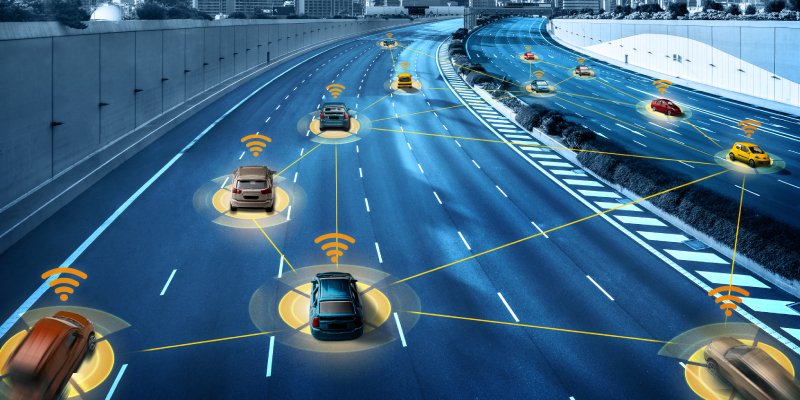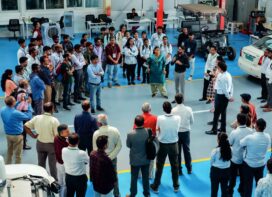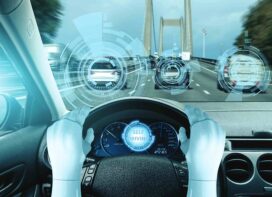 The answer to road safety is technology. Assisting our drivers, road users and infrastructure designers with the technology can become a game changer, writes Rama Shankar Pandey, Managing Director, Hella India Lighting Ltd.
The answer to road safety is technology. Assisting our drivers, road users and infrastructure designers with the technology can become a game changer, writes Rama Shankar Pandey, Managing Director, Hella India Lighting Ltd.

Rama Shankar Pandey, Managing Director, Hella India Lighting Ltd
As per the data released by National Crime Records Bureau, India recorded approximately 1,33,201 deaths (due to road accidents) in 2020, with millions more sustaining serious injuries and living with long-term adverse health consequences. There are many reasons for these alarming level of crashes in India and one must find out “Cause & Effect” relationship of all factors. While the government is highly concerned about these deaths and through world class regulation of vehicles, infrastructure, licensing and driving rules, it has demonstrated its strong intention to reduce alarming road deaths, what is still causing these crashes to continue, is a cocktail of inadequate enforcement of laws, violation of road rules and disrespect to life-saving protocols.
Countries where the citizens respect the road rules and make genuine human error, the Government supports by bringing major infrastructure reforms in a system approach, accepting that humans will make mistakes and the vehicles and roads should be forgiving to them.
Since our safety culture is way different than those countries and also our road designs and infrastructure have much more density of black spots, our roads have become a lot more dangerous. Added to that is the mixed traffic on the roads.
Early Level (0, 1 & 2) Advance Driver Assistance Systems, popularly known as ADAS can be a game changer more for developing countries like India than the west. This technology will break the vicious cycle of high road crash, missing safety culture and inadequate enforcement and create a virtuous cycle of alert, assist, save & learn for every road user and from millions of crash situations on an hourly basis. The learning from this assistance will not be limited for the moment and not for the drivers alone, but will further fuel design changes & safe interventions in vehicles and infrastructure on a large scale and will enable quick turnaround towards a sustainable & safe road infrastructure. These ADAS systems generate millions of scientific data with various parameters from every road user and scientists can use these data insights to find root causes of a potential crash even if it has never happened (Near misses of any potential crash) and use it not only to alert and assist our drivers, but come up with fail safe interventions in infrastructure and vehicles. In today’s technology paradigm, data is everything, data insights are the best policy directors than only having expert humans on the design table and ADAS exactly builds that data lake for technology professionals to save lives on our roads.
This can be achieved by fusion of telecommunication with informatics, encashing on the quantum leap scientists have taken in the domain of Data Science, Artificial Intelligence and Machine Learning. Active safety measures such as vehicle alerts, remote prognostics, through the connectivity of advanced driver assistance systems, have proven to improve road safety by helping the driver in managing or avoiding emergency situations pro-actively.
Depending on cost continuum, an ADAS system can have Cameras, Radar/LIDAR, Ultrasonic Sensors with connected ecosystem and fuse all data to create insights in real time for alert, assistance and in higher level even automatic actions of brake and accelerator can be done, nearing to autonomous driving. The role of ADAS is to prevent deaths and injuries by reducing the number of accidents and the serious impact of those that cannot be avoided. Some of the safety critical alerts can be pedestrian detection/avoidance, lane departure warning/correction, traffic sign recognition, automatic emergency braking, blind spot detection, fatigue alert, drowsiness detection alarm etc.
On an elementary level, even a mobile application which can do elementary alert and assist can be of great help. It can build even road users behaviour history and can be used for their own training or can be used as a safe driving score to be incentivised by various service providers, including insurance companies, to win them for respecting the road. This will trigger to build the missing trust among drivers/road users with road system to support the road rules, as they will have multiple gratification to drive safe. Situation will be completely different than today, where for 80-90K traffic cops across the country are struggling to catch billions of violations. With this technology, self-enforcement will kick start and over time, will build safety culture on our roads, users believing in the science of avoiding the crash than counting on luck. When only 10-20% violators are left, enforcement also will work.
It will be a win for all stakeholders. And so we will see India free from all avoidable road deaths through technology for a purpose.
 TrafficInfraTech Magazine Linking People Places & Progress
TrafficInfraTech Magazine Linking People Places & Progress


